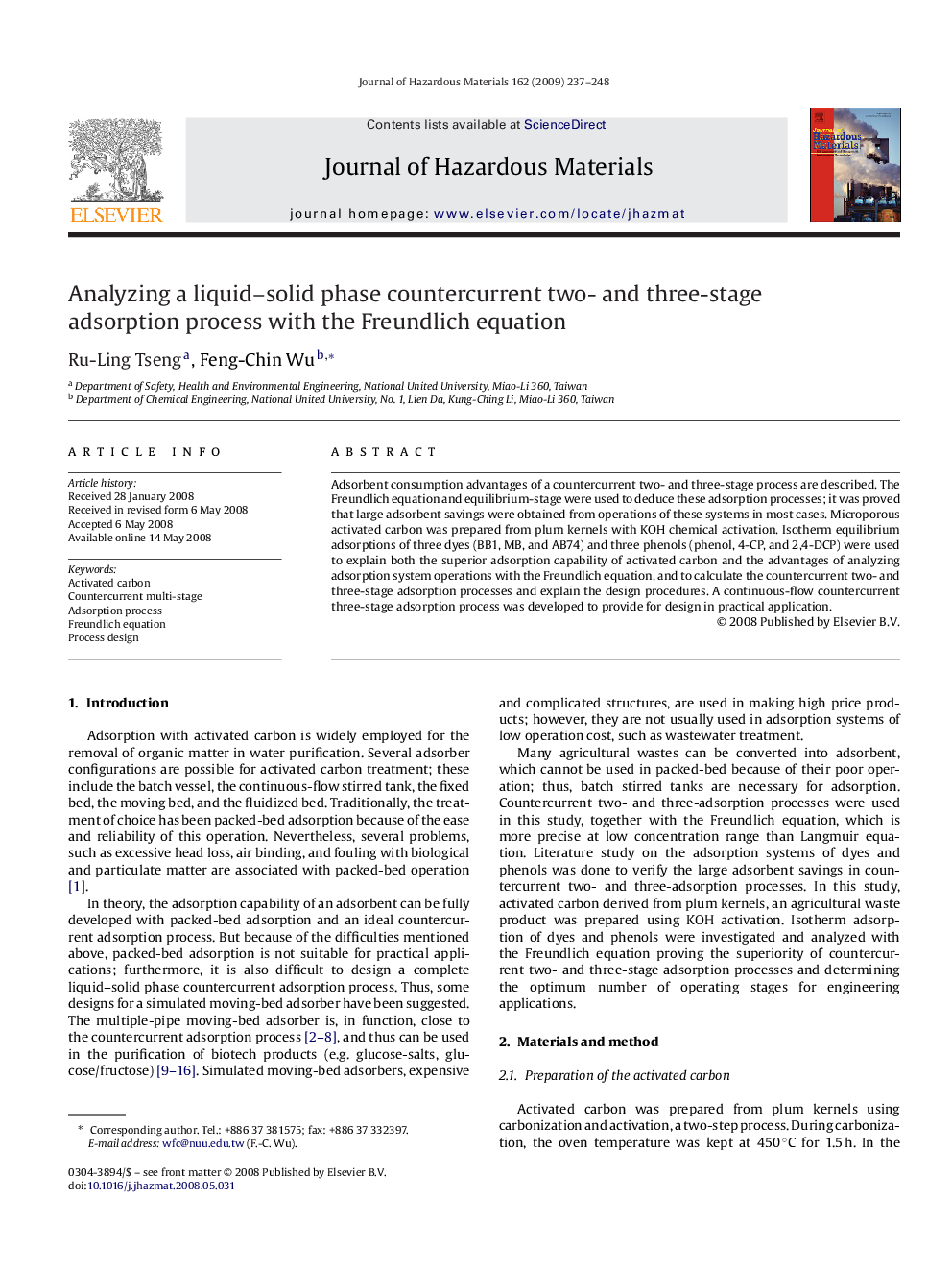| Article ID | Journal | Published Year | Pages | File Type |
|---|---|---|---|---|
| 582568 | Journal of Hazardous Materials | 2009 | 12 Pages |
Abstract
Adsorbent consumption advantages of a countercurrent two- and three-stage process are described. The Freundlich equation and equilibrium-stage were used to deduce these adsorption processes; it was proved that large adsorbent savings were obtained from operations of these systems in most cases. Microporous activated carbon was prepared from plum kernels with KOH chemical activation. Isotherm equilibrium adsorptions of three dyes (BB1, MB, and AB74) and three phenols (phenol, 4-CP, and 2,4-DCP) were used to explain both the superior adsorption capability of activated carbon and the advantages of analyzing adsorption system operations with the Freundlich equation, and to calculate the countercurrent two- and three-stage adsorption processes and explain the design procedures. A continuous-flow countercurrent three-stage adsorption process was developed to provide for design in practical application.
Related Topics
Physical Sciences and Engineering
Chemical Engineering
Chemical Health and Safety
Authors
Ru-Ling Tseng, Feng-Chin Wu,
